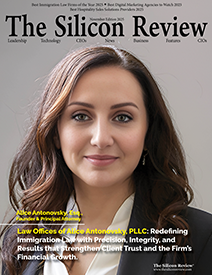>>
Industry>>
Energy and Utility>>
FERC Signals Confidence in Gri...FERC Signals Confidence in Grid Resilience as Market Turmoil Brews
The Silicon Review
21 April, 2025
Amid rising scrutiny over U.S. grid reliability, FERC asserts improvements in cold-weather performance—yet unease over PJM’s capacity market looms large.
In a closely watched April open meeting, the Federal Energy Regulatory Commission (FERC) acknowledged significant progress in winter grid readiness across U.S. power systems, while addressing growing unrest surrounding PJM Interconnection’s capacity market operations. The discussion reflected a pivotal moment for energy reliability as climate anomalies and market volatility converge. Chairman Mark Christie reaffirmed confidence in PJM, the nation’s largest grid operator, amidst industry backlash over recent capacity auction outcomes. He labeled some criticism “uninformed,” pointing to structural reforms already in motion to correct inefficiencies. While no formal enforcement was levied, FERC’s tone implied that PJM's current model may require sharper scrutiny to ensure long-term viability and pricing transparency.
The Commission also highlighted a notable shift in winterization compliance—especially following Winter Storm Elliott—where key regions, including Texas and the Midwest, demonstrated improved cold-weather performance. Engineering investments, real-time scenario simulations, and updated NERC standards appear to have fortified the grid, but reliability under compounding extreme weather events remains a concern. Notably, the Commission signaled interest in automating more elements of reliability planning, potentially integrating AI-enhanced load forecasting and real-time contingency analysis. For industrial automation stakeholders, this hints at an expanding market for precision sensors, digital twins, and grid-aware controls.
While the capacity market remains contentious, FERC’s overarching message was one of cautious optimism: the grid is stronger, but adaptive oversight and smart modernization are essential. Executives operating in energy, industrial automation, and infrastructure planning would do well to interpret this moment as a strategic inflection point. FERC’s direction makes one thing clear—future-ready grid design must blend resilience, transparency, and automation at scale.


_2025-11-17_06-38-14.webp)

 (1)_2025-10-21_13-35-14.webp)

_2025-10-02_10-21-48.webp)